Since our founding in 1904, we haven't forgotten the reason why we are here - to do everything possible to get you well and keep you well.
Senior Leadership
Jim Hoekstra, MD
President, Wake Forest Baptist Health - High Point Medical Center
Kevin Smith, MHA
Chief Operating Officer
Dale Williams, MD
Chief Medical Officer
Paula Correa, DNP
Chief Nursing Officer
Our History
High Point Medical Center has a deep, rich history in the community that began in 1904. As the organization grew over time, the hospital developed into the health system that we have today. That growth has helped us continue to fulfill our mission to provide exceptional health services to the people of our region.
Junior Order of Mechanics Hospital
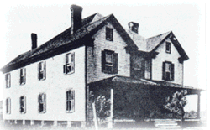 Concerned about the effects of recent typhoid and smallpox epidemics, members of the Junior Order of United American Mechanics decided it was time for the growing town of High Point to have a hospital, so they purchased and renovated a two-story frame house on Boulevard Street and went about the business of preparing it for patients. While the men gathered donations of furniture, the ladies collected sheets to make the first hospital beds. The facility made ready for its patients in the summer of 1904 with an open house, cookies and lemonade.
Concerned about the effects of recent typhoid and smallpox epidemics, members of the Junior Order of United American Mechanics decided it was time for the growing town of High Point to have a hospital, so they purchased and renovated a two-story frame house on Boulevard Street and went about the business of preparing it for patients. While the men gathered donations of furniture, the ladies collected sheets to make the first hospital beds. The facility made ready for its patients in the summer of 1904 with an open house, cookies and lemonade.
The hospital had room for 12 patients and employed 4 nurses and a housekeeper. The cost of a week’s hospitalization was between $10 and $15. High Point had 6,500 citizens.
The School of Nursing
1908
The School of Nursing, which was started around 1908, was bound by no state regulations in its early years. The first few nurses came from a nursing program in Sanford and were immediately put to work because the health care industry had nursing shortages even at the beginning of the 20th century. Nursing education was informal, but the experience produced nurses who combined hard work with compassion and common sense. The first class graduated in 1912.
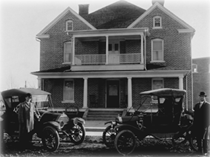 The Junior Order weathered financially tough times until Dr. John Tilman Burrus and Dr. Guy Duncan purchased the hospital for $2,500 in 1912 and took over operation of the fledgling facility. At that time the name was changed to High Point Hospital.
The Junior Order weathered financially tough times until Dr. John Tilman Burrus and Dr. Guy Duncan purchased the hospital for $2,500 in 1912 and took over operation of the fledgling facility. At that time the name was changed to High Point Hospital.
The hospital’s cash balance at the end of each of the early years was usually passed "to fixtures and improvements" which was how the hospital literally grew a room or two at a time.
IMAGE: Dr. Guy Duncan (left) and Dr. John Burrus - 1912
Dr. John T. Burrus and Mr. Andrew
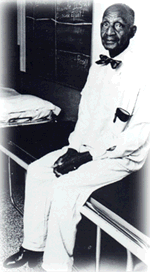 In 1910, Andrew Corbett, aka Mr. Andrew (pictured to the left), began working with Dr. John Burrus and the staff at High Point Hospital. This was the beginning of a 73 year association.
In 1910, Andrew Corbett, aka Mr. Andrew (pictured to the left), began working with Dr. John Burrus and the staff at High Point Hospital. This was the beginning of a 73 year association.
While Dr. Burrus traveled overseas, with Mr. Andrew at his side, to serve our country during World War I, patients had to travel by train to Salisbury for surgery. Dr. Burrus’ return in 1919 saw him hailed as a traumatic care specialist.
When Dr. Burrus drew up a will in 1927, he set up a trusteeship which was to provide for the continued operation of the hospital for 10 years after his death.
Though that will became inoperative upon the 1933 sale of the Hospital to The Duke Endowment, Dr. Burrus later drew up another will which left funds for the maintenance of the buildings, the equipment of the hospital and the nurse's home. Dr. Burrus died in 1935.
When Mr. Andrew retired in 1983 at the age of 91, he was the longest term hospital employee in the nation and one of our hospital's most cherished health care professionals.
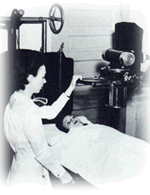 The First Emergency Room
The First Emergency Room
Sometime in the 1920s, an addition was made on the back of the hospital to house an X-ray machine and an emergency room. In 1921, a young Navy surgeon, Dr. H.L. Brockmann, joined Dr. Burrus with the assignment of establishing a laboratory to provide better diagnostic facilities. After the arrival of an ear, nose and throat (ENT) specialist and a general surgeon during the 1920s, a new, modern operating suite was added. High Point had 28,000 residents.
IMAGE: Hospital's X-ray machine - 1920s
The Depression
By the time the banks closed in 1929, the hospital deeply felt the Depression. Hospital income was at its lowest point in history, and there were anxious moments when the doors nearly closed. Nurses were provided food and lodging instead of salaries, and local ENT specialist, Dr. O.B. Bonner, helped pull the hospital through by sending his tonsillectomy patients to the hospital instead of doing the surgeries in his office.
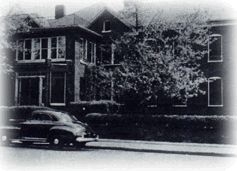 Burrus Memorial Hospital
Burrus Memorial Hospital
After enduring the Great Depression, High Point Hospital endured another change of ownership. In 1933, with help from The Duke Endowment, the hospital became a community hospital with a self-perpetuating board of trustees. Although it was no longer owned by Dr. John Burrus, the hospital bore his name, Burrus Memorial Hospital, in honor of Dr. Burrus’ parents.
IMAGE: Burrus Memorial - 1933
About the same time, the Nursing School became state approved. By the mid-30s, the hospital had a physician in charge of radiology, a registered nurse in the emergency room, two laboratory technicians, a secretary to type patient histories and a dietitian. And sadly, in 1936, Dr. Burrus died.
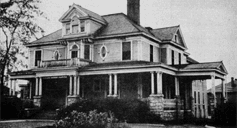 High Point Hospitals Merge
High Point Hospitals Merge
As early as 1943, a planning and building committee began to study hospital needs in High Point while developing means of securing financial support. In late 1943, the board of trustees decided to change the hospital’s name. This time the name was High Point Memorial Hospital.
A new name was not the only change in store for High Point Memorial Hospital. In 1944, High Point’s 2 hospitals – and their medical staffs – merged. For nearly 30 years, High Point had 2 hospitals – the old Junior Order Hospital and Guilford General Hospital, which had opened in 1912 in a renovated house at the corner of Washington and Steel Streets. Until the merger of the 2 facilities, the medical staffs had not worked together.
"We now have a more cohesive body of medical men than ever before," Dr. Brockmann said in 1944. The new High Point Memorial Hospital had a Boulevard unit (Burrus Memorial) and a Washington Street unit (Guilford General). Patients had a choice of where to be admitted.
IMAGE: Guilford General Hospital
Women's Hospital Guild
Through persistent efforts of W.R. Peters, administrator at Guilford General and then at the new High Point Memorial Hospital, the Women’s Hospital Guild was formed. The initial group of 12 women began a tradition of giving, which has been a source of emotional support and financial aid to the hospital totaling over $4 million through its 59-year history.
War Thwarts Growth
Board members appealed to the federal government for assistance in building a new facility, but the government was helping only where there was a definite war-connected need for hospital facilities. The board turned to the community and High Point’s citizens once again met the challenge.
A Social Challenge
Dr. Jack Lynch and Nursing Supervisor Ophelia Corbitt confronted the hospital’s social policy of segregation. Mrs. Corbitt, head nurse of the "colored" ward, called Dr. Lynch, a pediatrician who had been in town just 2 weeks, to help her with a 3-pound black baby who needed special care. The hospital’s only incubator was located in the all-white nursery, and Dr. Lynch decided to break hospital policy and move the black baby so it could receive the care it needed. The baby survived.
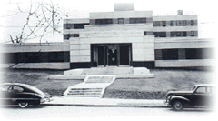 The New Hospital
The New Hospital
After the community’s attempt to build a new facility was stalled by the government – and the war – corporate and individual support from the community resulted in a successful building campaign. The new hospital opened in 1950 with 100 beds. A concrete walkway was built to connect the "old Burrus Memorial building" to the new facility, when officials realized that the new building just wasn’t big enough. The new hospital would end up using 80 beds in the old building.
IMAGE: High Point Memorial Hospital - 1950
New Hospital Experienced Growing Pains
"The new hospital was filled from the outset and pressures quickly built up for more space. The old portion of the original hospital was utilized, but as it became older and dingier it contrasted sharply with the bright new facilities. Time and time again there was no room for patients, frequently heart cases had to share a room or remain in beds placed in halls until a room became available. Trustees and staff were distressed."
—Carter Dalton,
High Point Enterprise
1958
A Heart Center
The idea of a heart center originated, and community leaders and board members teamed up to challenge High Point to again provide for the facilities. With the help of The Duke Endowment, Hill-Burton funds and a huge outpouring of generosity from the community, $1.3 million was raised for a substantial addition, which virtually doubled the size of the hospital. High Point’s population was nearly 40,000.
The School Of Nursing
The Nursing School was flourishing, sending its graduates across the country. To accommodate the growing enrollment, a modern, new nurses’ dormitory and class building was completed in 1954.
"The story of the development of High Point’s hospital, to me, is a thrilling one. It is the story of dedicated men and women who have battled for what they felt was right and that purpose has triumphed in an institution that reflects credit upon the community which provided and operated it …. High Point has its hospital … operating successfully as a nonprofit organization dedicated to the well-being of all the people of this community."
—Carter Dalton,
High Point Enterprise
Sept. 14, 1958
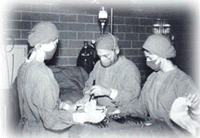 The Hospital's Many Firsts
The Hospital's Many Firsts
The 1960s were characterized by many firsts. High Point Memorial Hospital may not have been the largest, newest hospital in the state, but that didn't dampen its enthusiasm and drive for excellence. Through a donation from the guild, the hospital bought a mobile X-ray unit for the operating room – the first unit of its type in any North Carolina hospital. Upon buying and installing 3 neurosurgery air drills in 1966, with funding again provided by the guild, High Point Memorial became the first operating room in the Carolinas to have this equipment.
IMAGE: Operating Room - 1960s
The 1960s are also remembered throughout the nation for the Civil Rights Movement, and High Point Memorial was no different. In 1964, the hospital ended its practice of segregating patients by race, and the hospital became fully integrated.
The Hospital Guild
The Hospital Guild continued to fund many of the hospital’s amenities and necessities that we now take for granted. The guild’s generosity provided air conditioning throughout the hospital and the Nursing School facilities. The guild funded the hospital’s first, full-time chaplain and the first hospital social worker.
Hospital Continued to Grow
Nearly a decade after its last major building project, the hospital added on and updated its facilities for the area's growing needs. The Hospital Guild pledged $75,000 to the project. Their's was the first and the largest single donation to the 1967 campaign.
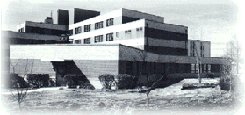 Another addition to the hospital opened, shifting the public's focus from the art deco entrance of the 1950 facility to a modern linear facade. This 1971 building still stands as the Elm Street site. With these additions came greatly improved diagnostic capabilities – a new clinical laboratory, a greatly enlarged X-ray department and a highly specialized coronary care unit.
Another addition to the hospital opened, shifting the public's focus from the art deco entrance of the 1950 facility to a modern linear facade. This 1971 building still stands as the Elm Street site. With these additions came greatly improved diagnostic capabilities – a new clinical laboratory, a greatly enlarged X-ray department and a highly specialized coronary care unit.
IMAGE: High Point Memorial Hospital - 1971
Hospital Eyed Relocation
As another decade passed, the hospital needed space and equipment to serve its 63,000 residents. The hospital again looked at planning a completely new facility, beginning a citywide controversy over a possible relocation from its historical site near downtown High Point. Agreement was difficult to reach. After 5 years of debate, the decision was made to stay at the original Boulevard Street location.
Nursing School Closed
With the graduation of the Class of 1978 High Point Memorial closed the School of Nursing after graduating a total of 891 nurses in its 70 years of service.
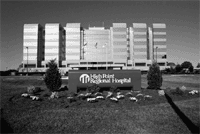 A Regional Hospital
A Regional Hospital
As the shiny new facility neared completion, High Point Memorial officially changed its name to High Point Regional Hospital, to reflect the new focus on quality health care for High Point and surrounding communities in Guilford, Randolph, Davidson and Forsyth counties and throughout the Triad.
IMAGE: High Point Regional Hospital - 1985
Ribbon Cutting
On Nov. 8, 1985, en route to a campaign fund raiser, then Vice President George Bush visited High Point Regional Hospital’s nearly completed facility and presided at a ribbon-cutting ceremony. He congratulated High Point on the construction of its new hospital and, more importantly, on “the propensity of one American to help another."
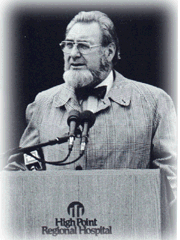 Moving Day
Moving Day
An underground tunnel, connecting the old hospital to the new, provided a thoroughfare for transferring patients to the new facility on January 8, 1986.
"I would submit to you that a change has come upon the practice of medicine. Gone are the days when a hospital merely can be concerned about the alleviation of suffering and the saving of lives. Today, doctors in particular, and health care providers in general, are expected to be involved in a number of social issues that are not in the traditional practice of medicine. I believe you have a very exciting era ahead of you. And think what an advantage you have to see it all happen within the walls of an institution like this and under the influence of this marvelous new facility."
—C. Everett Koop, MD, U.S. Surgeon General (pictured to the right)
High Point Regional Hospital dedication ceremony, Feb. 28, 1986
The Endowment Fund
In 1986, the hospital's Board of Trustees established a formal "safety net" for health care in the community by creating the Endowment Fund. The intent was to insure the hospital’s ability to meet the constantly changing demands of providing health care.
Responding to the Community's Needs
High Point Medical Center had a new building, yet the hospital continued to grow and change in response to health care’s constantly changing landscape. More outpatient services were needed; yet those patients who were hospitalized needed more sophisticated care, so High Point Medical Center added programs such as: High Point Surgery Center, the MRI Center, the Pain Management Center, the Cancer Registry, the Sleep Disorders Center, High Point Behavioral Health, the Restorative Care Unit and reconfigured inpatient units to provide more intensive and intermediate care.
The hospital launched an open-heart surgery program in 1991, a monumental step forward in the quest for true "regional" health care. Meanwhile, the hospital shaped its Centers of Excellence in cancer care, emergency medicine, heart care, neuroscience, orthopaedics and women’s health, as well.
Not even 10 years after High Point Medical Center opened its new facility, administrative and board leaders realized that the hospital may once again need more room, so research and planning began.
A Health "System"
By 1996, High Point Medical Center’s corporate structure evolved into a "Health System" because hospital care had become only a part of what the organization did. Outpatient services for pain management, physical rehabilitation, diabetes management, behavioral health, laboratory services, wound care, urgent care – and much more – were just the beginning of the organization’s diverse network of health care resources.
Meanwhile, the Endowment Fund grew steadily, and with an historic vote, the Endowment Board and Board of Trustees voted to grant a portion of the growth of the Endowment Fund to establish a Teen Resource Center in High Point. This vote set the precedent for future endowment grants now totaling in excess of $4.5 million. The endowment grants funded many projects including the Millis Regional Health Education Center, the Community Clinic and the Guilford School Health Alliance. The Health System was also instrumental in the development of Guilford Child Health, and later, Guilford Adult Health, to care for the area’s medically indigent.
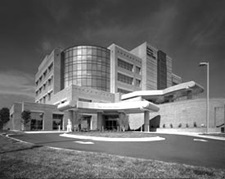 Carolina Regional Heart Center
Carolina Regional Heart Center
Carolina Regional Heart Center opened in January with special speaker North Carolina native and U.S. Senate candidate Elizabeth Dole. The Women’s Resource Center and Women’s Imaging Suite also celebrated their grand opening.
Magnet Status
High Point Medical Center earned Magnet status by the Credentialing Center of the American Nurses Association in recognition of nursing excellence, becoming 1 of only 36 hospitals in the country to own this prestigious designation.
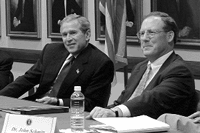 A Presidential Visit
A Presidential Visit
As President George W. Bush made his way across the nation focusing on health care issues, he selected High Point Medical Center as the venue for a national round-table discussion on malpractice insurance. The nation’s attention turned to High Point Medical Center, as the president and national medical industry leaders converged for a medical summit.
Emergency Center
The Health System opened its newly expanded and renovated Emergency Center in 2002, providing patients twice as much room and much improved access and privacy.
Joint Replacement Center
Piedmont Joint Replacement Center opened in 2002, offering education, surgery, post-operative care and individual and group physical therapy for patients undergoing joint replacement.
Hayworth Cancer Center
In its continuing efforts to meet the region’s most pressing health care needs, High Point Medical Center opened Hayworth Cancer Center. At the same time, the program was reaccredited at the highest level of approval from the Commission on Cancer of the American College of Surgeons.
Premier Imaging Opens
In 2010, our Premier Imaging freestanding facility opened and was unlike any other diagnostic imaging center around. Premier Imaging offers a comprehensive array of cutting-edge diagnostic imaging equipment, from digital X-ray and MRI units to a 40-slice CT and the latest digital mammography platform.
Merger with UNC Health Care
In 2013, UNC Health Care became the sole member of High Point Medical Center providing $150 million for capital improvements and $50 million for the establishment of a newly formed Community Health Fund. High Point Medical Center remained a private, not-for-profit entity and maintained a foundation to provide support for ongoing patient care, technology and capital needs.
A New CEO
The Board of Trustees of High Point Medical Center appointed Ernie Bovio as President and CEO in May 2014. He succeeds Jeff Miller who retired as President March 31, 2014 after 26 years of service with the organization.
Opening of Inpatient Pediatrics
High Point Medical Center opened of a new Inpatient Pediatric Unit October 1, 2015. The new unit allows pediatric patients and their families to receive the care they need in their own community.
Partnering with High Point University
High Point Medical Center and High Point University announced a clinical partnership for physical therapy services and student education. As part of this collaboration, High Point Medical Center opened a new physical therapy clinic in May 2016 and began providing clinical education opportunities for students of High Point University’s physical therapy department in 2017-2018.
Hayworth Cancer Center Becomes Service of UNC Hospitals
The Hayworth Cancer Center at High Point Medical Center became a service of UNC Hospitals in 2016 This transition provided both High Point Medical Center and UNC Hospitals with strategic advantages while continuing to provide patients with high quality, exceptional care by their same oncologists and medical professionals in High Point.
Capital Campaign Launches
High Point Medical Center announced the public phase of their most ambitious capital campaign in the history of the organization. In the first year of the campaign, approximately $25 million was raised including a $10 million lead gift from The Earl & Kathryn Congdon Family Foundation. In recognition of this gift, High Point Medical Center’s Heart Center will be renamed in honor of the Congdon Family.
The capital campaign will provide critical support to a $55 million need that will completely expand and renovate the third floor of the hospital, consolidating all of the cardiology services, cardiac cath labs, electro physiology labs and diagnostic testing into the Heart Center. All operating rooms will be renovated, modernized, and enlarged to accommodate the latest and most advanced surgical equipment in the region. In the Hayworth Cancer Center, there is also the planned development of a new urgent care clinic for cancer patients as well as acquiring new technology for radiation therapy treatments. The new Day Hospital opened in April 2017.
Joining Wake Forest Baptist's Health Care System
High Point Regional Health officially became part of the Wake Forest Baptist Medical Center family on Saturday, September 1 and had a new name, Wake Forest Baptist Health - High Point Medical Center.
Our Mission Continues
Today, High Point Medical Center serves a region encompassing 600,000+ people. That’s a far cry from the town of 6,500 that so desperately needed a hospital in 1904. While our region has certainly grown and our techniques of caring for the sick only vaguely resemble the methods of care available to our forefathers, one thing remains the same: our commitment to care for patients one at a time.
In today’s high-tech, fast-paced health care environment, High Point Medical Center sets itself apart by putting patients first. Our patients’ needs, wants, comfort and satisfaction drive every decision we make and each action we take. As a leader in understanding the needs of our region and in providing exceptional health services to citizens today and for many generations to come, we embark on our second century of care.
A New President
In September 2018, James Hoekstra, MD, was named President of the High Point Medical Center. Dr. Hoekstra brings considerable leadership skills and strengths to High Point Medical Center, including broad relationships within the provider community as well as experience with the previous integrations of Cornerstone Health Care and Wilkes Medical Center. He serves on the Atrium Health Wake Forest Baptist strategy leadership team and is a key physician leader in the health system. Helping drive growth of clinical programs and service lines including acquisition and integration of network health systems, physician practices and network clinical programs, he is also responsible for growing academic relationships for Wake Forest University School of Medicine.
Atrium Health and Wake Forest Baptist Health Officially Join
In October 2020, Atrium Health and Wake Forest Baptist Health, including Wake Forest University School of Medicine, officially joined together as a single enterprise, Atrium Health. Both health systems are renowned for their clinical expertise, and the school of medicine is nationally recognized for its medical education programs and research. With the strategic combination now complete, the collective vision to transform medical education, expand patient-centered research and innovation, and define the next generation of clinical excellence becomes a reality.
The new Atrium Health enterprise will bring clinical expertise together with the research, innovation and the educational capabilities of these renowned institutions to revolutionize the ways people become and stay healthy, changing lives for the better for the more than 7 million people across the region who now have access to care from the combined organization. The enterprise will have over 70,000 teammates working together to provide personalized care for each of the 15 million patient interactions it has each year, fulfilling its mission to improve health, elevate hope and advance healing – for all.
